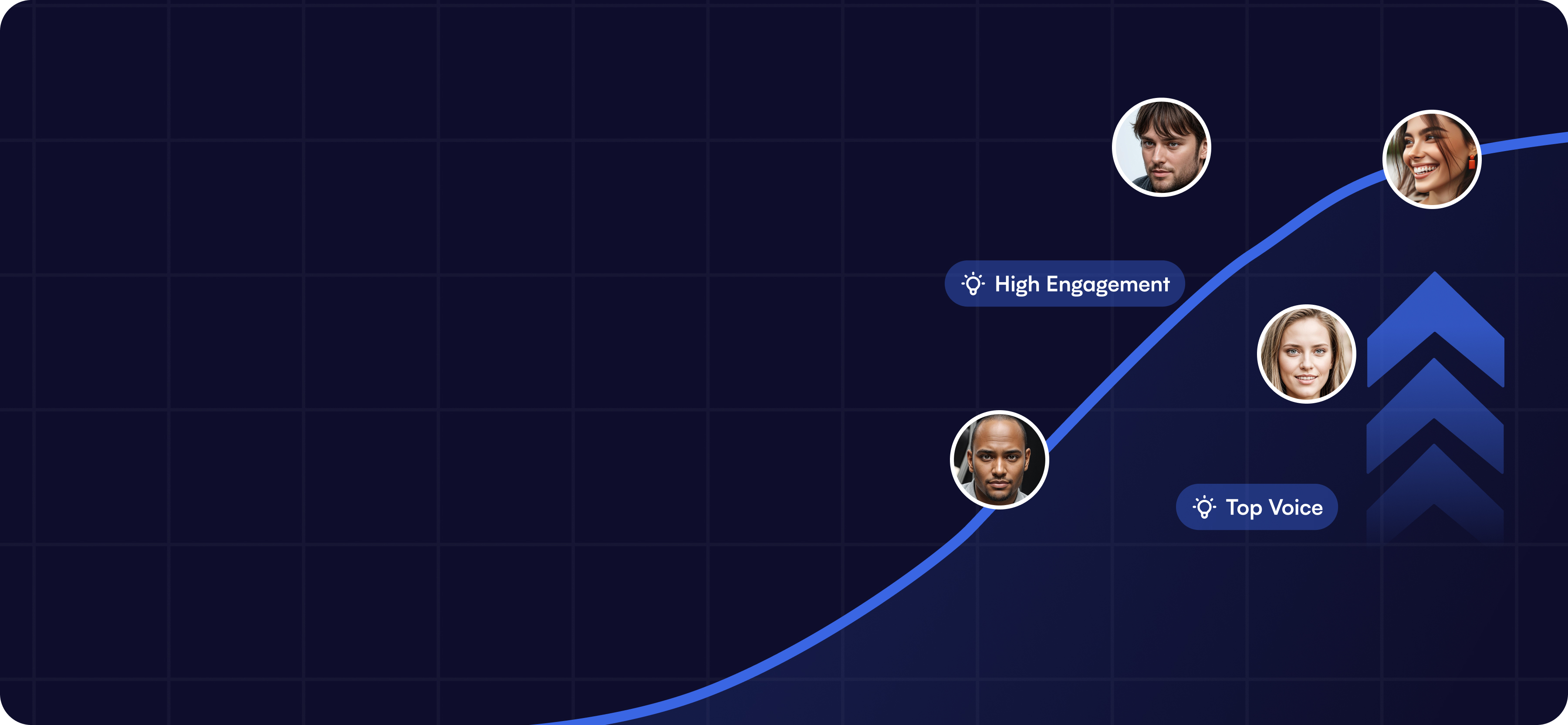Check Out Rajiv Shah's LinkedIn Stats (Last 30 Days)
Rajiv Shah
Bringing Generative AI to the Enterprise
AI Summary
Seasoned AI strategist bridging technical expertise with business acumen. From military 'why guy' to data science innovator, I've driven millions in value across industries. Now, I empower enterprises with cutting-edge AI solutions, communicate complex concepts clearly, and lead go-to-market strategies for top AI startups.
Topics associated with them
Data Analysis
Research
Higher Education
Teaching
Public Speaking
Blogging
Follower Count
19,899
Total Reactions
259
Total Comments
27
Total Reposts
13
Posts (Last 30 Days)
4
Engagement Score
54 / 100
Rajiv Shah's recent posts
Rajiv Shah
Bringing Generative AI to the Enterprise
Ever wish you could connect Claude, Cursor, or any LLM to your internal RAG without wrangling a bunch of custom code? We make that super easy using an MCP Server and with Contextual AI RAG agents. 🧠 Why MCP? MCP (Model Context Protocol) acts as a lightweight abstraction layer that lets your LLMs call external tools easily. Instead of direct API calls, you define tools once in your MCP server and just use them anywhere. What I Show in the Video: 💸 Query financial RAG agents inside Clause Desktop 💻 Pull code snippets from technical docs in Cursor 🧩 Server logic stays clean and flexible — all in one config with MCP ☁️🖥️ Deploy it locally or in the cloud, and you’re off to the races You can extend this MCP Server to: 🔁 Chain agents ⚙️ Change prompts/retrievers 📊 Pull metrics …all using the same lightweight interface Next steps: Watch my video and reach out if you have questions Check out the github repo to try Signup for Contextual AI!
Rajiv Shah
Bringing Generative AI to the Enterprise
The missing piece in most RAG evaluations? They focus too much on the final answer 🟣 If you want to really assess your RAG system — you need to go deeper. You should be asking: ✅ Is your retriever surfacing the right chunks? ✅ Is your reranker putting the best ones on top? ✅ Is your generator actually using them — or just hallucinating? 🤔 RAGAS provides a starting point of metrics for assessing every part of your pipeline. To help explain this, I was inspired by a visualization from Krystian Safjan 🧩 Start with: 💬 Query 📚 Ground Truth 📄 Retrieved Contexts ✏️ Generated Response Metrics: Reference-free ✅ 🟢 Faithfulness — Is the answer supported by the retrieved context? 🟢 Answer Relevance — Does the generated answer address the question? 🟢 Context Relevancy — Are we pulling useful chunks? Ground-truth-based ✅ 🟠 Context Precision — Are the important chunks ranked high? 🟠 Context Recall — Are we finding all the important chunks? 🟠 Factual Correctness — Does the answer actually match the ground truth? So next time you’re debugging or evaluating a RAG system, don't just ask: "Is it correct?" Ask: "Where is it breaking — Retrieval, Ranking, or Generation?" 🔍 👉 Full metric details from RAGAS: https://lnkd.in/g5Mi8yVU While I reference RAGAS here, you’ll find these metrics across many evaluation packages and frameworks — they’ve become foundational.
Rajiv Shah
Bringing Generative AI to the Enterprise
Up your performance with an Instruction-Following Reranker Let me give you the deep dive and your first 50M tokens! We launched last week and let explain the interest 👇 🔍 Since day one at Contextual AI we use Rerankers Rerankers have been key for pulling signal from noise. Retrieval = high recall (find all the needles) Reranking = high precision (find the right needle) They’re now core to any serious RAG pipeline. 📉 Open-source rerankers (2023) We tested them all—and hit real-world limits fast: Small query tweaks broke them Poor generalization beyond academic datasets No fine-tuning paths = stagnant performance Bottom line: they weren’t reliable enough for production. 🏆 State-of-the-art reranker (2024) We built our own from scratch— Achieved SOTA on BEIR + private enterprise benchmarks But customers needed more control Examples: ✅ Prioritize structured over unstructured data 🧠 Boost internal notes over external sources 🗓️ Rank March 2021 higher than April 2021 Static models couldn’t support that. So we kept going. 🧠 Instruction-following reranker (2025) Now we let users define their own ranking logic— By source, date, content type, or custom rules While maintaining SOTA performance It’s flexible, precise, and enterprise-ready. 🛠️ What’s next? We’re continuing to invest in: Long-context support Faster latency Better throughput And we’re shipping regular updates. 🔗 Try it out: 📖 Blog: https://lnkd.in/gnHccGjt 🔑 API Key: https://app.contextual.ai/ 📓 Notebook: https://lnkd.in/gV-MNzdG
Rajiv Shah
Bringing Generative AI to the Enterprise
Build GenAI Agentic Workflows Without Writing Code? Yes, Please. 💡 In my latest video, I explore Dify —an open-source, UI-based platform that lets you build and deploy agentic GenAI workflows without diving deep into code. Here's what stood out: 👇 Why Dify.AI? 🧩 No-code UI: Drag-and-drop blocks to build complex agent workflows 🔓 Open-source: Self-hosting options and transparency in architecture 🧠 LLM-ready: Built-in support for GPTs, Claude, and other LLM APIs 🔁 Modular Blocks: Integrate APIs, write code, do logic, parse outputs 👥 Team Friendly: Great for non-coders who want to contribute to AI projects What I Built With It I used Dify to create a RAG-style Q&A chatbot for a customer: 📥 Input Block: Captures a question from the user 🔗 API Block: Sends the query to our RAG backend 🧾 Code Block: Parses the structured response 💬 Display Block: Presents a clean output to the user I didn’t have to hard-code logic or wiring between steps—everything connected visually. This was a toy example to show my customer they could easily integrate my application with Dify. What Makes It Click 🧱 Blocks for logic (if/else), code execution, and prompt chaining 🧪 Tons of templates: Document Q&A, NotebookLM podcast generation clone, complex agentic workflows, etc. 🔍 Debug-friendly: You can ask ChatGPT or Claude when you're stuck (worked great!) 🖇️ Easy to tweak: Drag to rearrange, drop in code when needed There are a lot of visual GenAI builders popping up, such as 🌿 Langflow: Visual graph-based builder 🔗 LangGraph: For agent workflows I picked Dify.AI because a customer asked me to look into it. At this point, I haven't seen one platform that is much much better than others. If you’re exploring GenAI tooling or need a UI-friendly solution to prototype or share with a non-technical team, give Dify a spin. Check out my full video over at: Youtube: https://lnkd.in/gkrCcmXW (I also have a shorter version on Reels and TikTok)
Rajiv Shah
Bringing Generative AI to the Enterprise
Why Do Multi-Agent LLM Systems Fail? 🤖⚠️ New research from Berkeley just dropped, let's dig in. The study tested 5 popular frameworks across 150+ tasks and identified 14 failure modes. Here’s what you need to know: 🔍 3 Key Failure Categories: Specification Failures: Agents don’t fully understand their roles or tasks due to unclear instructions. Inter-Agent Misalignment/Coordination: Agents work at cross-purposes, duplicate tasks, or fail to share important info. Execution Failures: Agents get stuck in loops, make errors, or fail to complete the task. 🚀 Technical Takeaways: Coordination is hard. Many failures stem from poor communication and the lack of shared memory. More agents ≠ better results. Increasing agent count doesn’t necessarily improve performance—it can make things worse. Task design matters. Clearer instructions and structured workflows reduce errors significantly. Error handling is weak. Most frameworks struggle with debugging and fail gracefully. 💡 What Can We Do? Design better agent coordination strategies—shared memory and improved role assignment help. Improve error handling so agents can recover from failures instead of getting stuck. Focus on smaller, specialized agent teams instead of large, loosely coordinated ones. Develop better benchmarks to evaluate MAS performance in real-world scenarios. The research shows that multi-agent LLM systems are promising but far from reliable yet. However, these problems do have solutions and we can expect agents to get better. Check out the full paper, lots of good stuff: Why Do Multi-Agent LLM Systems Fail? https://lnkd.in/gPKHYpuB
Rajiv Shah
Bringing Generative AI to the Enterprise
We are Hiring! (plus bonus openings) AE, Sales/MLE Engineer, and a Developer Advocate. Check out the listings: https://lnkd.in/gbr4pFsn And for the MLE/Sales Engineering folks that I know and can vouch, Are you looking for something else? If so, let me know. There are plenty of companies looking for good folks in my network.
Top Hooks from Rajiv Shah



Famous LinkedIn Creators to Check Out

Kevin Anthony Johnson, PCC
CEO & Trusted Advisor | Coaching Global Leaders to Build Legacies of Influence + Impact
11,252 Followers
Open in LinkedIn
Matt Dearth, PhD
Associate Professor of Finance (Practice); Non-Executive Director; author, speaker, and lifelong learner
4,589 Followers
Open in LinkedInansari shab
Roxana Sharifi

Yunfeng Chen
Associate Professor (Tenured) at Purdue University - Purdue Polytechnic Institut
18,670 Followers
Open in LinkedIn
